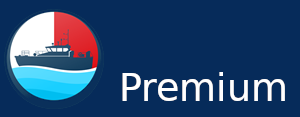Link to the original article below
To publish or not to publish
Usually, the reason to publish a technical essay is twofold. First you want to share findings with your peers. You hope that the ideas can be discussed and validated, that the added knowledge might one day play a part in improved professional acts. Secondly, you are seeking a date stamp, proving that you have expressed your ideas at a given moment. There is no patent for theories. The only retribution they bring is the recognition of authorship. If someone pretends that he or she figured it out before you, the burden of proof is on them and the date of issue of an article is a solid argument to back your position. My wife suggested a third reason to publish that was vaguely rhyming with self-glorification. I skilfully deflected that observation by telling her how beautiful she was and how I intended to wash the dishes and do the laundry for the rest of the month.These thoughts are sure to wake the butterflies in the stomach, but the preparation of a technical demonstration remains a hrill. So, I’ll give it a go, and try to shed a different light on a ship handling phenomenon: why the use of bow thruster can ause ships to gain headway?
Bow Truster and Ship's Headway
It is common for pilots to realise, when the bow thruster has been in action for a while, that not only the ship turns but it also ains forward speed. A common explanation is that the low pressure created at the suction of the bow thruster would pull he ship ahead. This effect can also occur when turning the ship with the push of a tugboat or a rope pulling at 90° (on a small-scale vessel). In these cases, though, no area of low pressure is acting on the hull. The explanation has to lie somewhere else.In the case of a side force applied at the stern of a ship, the same principle applies. The azipod, the stern thruster or the pushing tug can, in addition to the desired swing, create sternway.
ABBENDUM
It has been a few years since the publishing of “The Pivot Point?” in The Pilot October 2008.One of the consequences of the concept is a need to refresh the representation of the water pressure around the hull in ship handling books. The diagram showing positive pressure on the port bow when a ship turns to starboard is a classic. It was the cornerstone of the previous explanation for the shift of the pivot point. The bow is shown "leaning on” the compressed water, pushing the pivot point ahead. At ship handling speed, this pressure diagram makes little sense and should be corrected. The part of the ship ahead of the pivot point is moving to starboard and creates a void in the area of the port bow (fig. 4). So, negative signs should appear in that zone.
A detailed animation and video of the above demonstration can be seen here:



